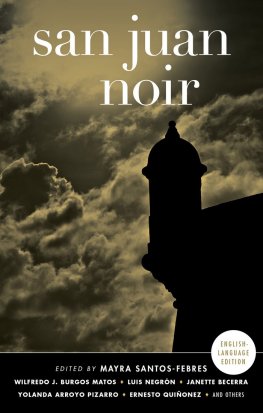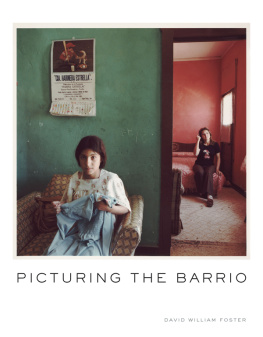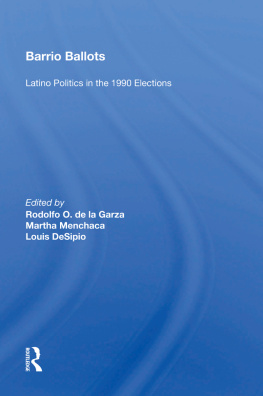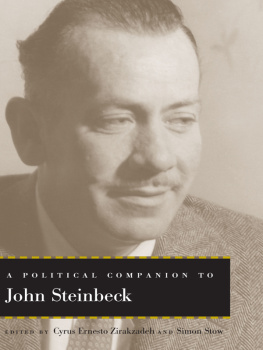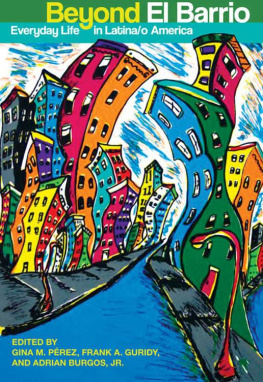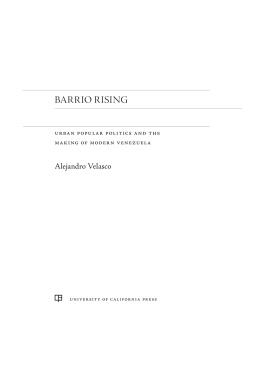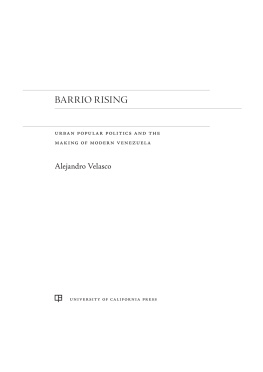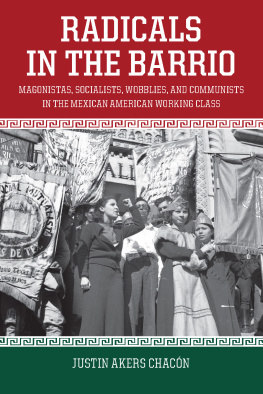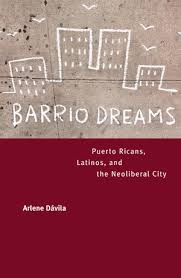Copyright 2011 by
University of Notre Dame Press
Notre Dame, Indiana 46556
All Rights Reserved
Manufactured in the United States of America
Introduction to the 40th Anniversary Edition, copyright 2011 Ilan Stavans
This work was originally produced through the United StatesMexico Border Studies Project at the University of Notre Dame, under the direction of Julian Samora, and sponsored by a grant from the Ford Foundation.
E-ISBN 978-0-268-08062-4
This e-Book was converted from the original source file by a third-party vendor. Readers who notice any formatting, textual, or readability issues are encouraged to contact the publisher at
ILAN STAVANS
All sins have their origin in a sense of inferiority otherwise called ambition.
CESARE PAVESE
AT THE OUTSET of Barrio Boy, Ernesto Galarza, sixty-six years old when the book was published, explains the volumes humble beginning. It started as a series of thumbnail sketches he repeatedly told his family about Jalcocotn (aka Jalco), the idyllic small village on the Sierra Madre, south of where the Gulf of California meets the Pacific Ocean, where he was born. For years those sketches enchanted those who listened. Then Galarza retold them in a gathering of scholars. The response was equally enthusiastic, to the point that he was encouraged to shape them into a book-length manuscript about his acculturation as a Mexican boy in California at the dawn of the twentieth century.
Passionate as he was about writingalthough until then, most of what he had published was scholarly in naturehe nurtured some reservations. Throughout his life, Galarza had fought against economic individualism and for the improvement of labor relations, specifically among Mexican agricultural workers in the Southwest. For a while he worked as the principal in a progressive school. He was a researcher for the Pan-American Union (the forerunner of the Organization of American States), a job that placed him at the center of more than one political storm in Washington, D.C. And he devoted his energy to building unions and establishing broader, more inclusive school curricula. In other words, the format of a memoir was a strategy to bring attention to himself, something he wasnt prone to do, at least not in front of a large public.
It is important to recognize that at the time, the genre of autobiography was beginning to have some traction in Latino intellectual circles. A number of memoirs had appeared by state governors, such as Miguel Antonio Otero, Jr. (My Nine Years as Governor of the Territory of New Mexico, 18971906), or outlaws such as Andrew Garca (Tough Trip through Paradise, 18781879). Later, Puerto Ricans, from the activists Jess Coln (A Puerto Rican in New York and Other Sketches) and Bernardo Vega (Memoirs of Bernardo Vega) to doctor and poet William Carlos Williams (Autobiography of William Carlos Williams), delved into autobiography to explore their personal, social, ideological, and aesthetic loyalties. However, the Civil Rights era encouraged different viewpoints, and authors such as Piri Thomas (Down These Mean Streets), John Rechy (City of Night), and Oscar Zeta Acosta (The Autobiography of a Brown Buffalo and The Revolt of the Cockroach People) opened up the genre somewhat.
Galarza justified the endeavor, as he states at the beginning of the book, by coming up with a couple of clear-cut purposes he wanted to accomplish in Barrio Boy. The first, historical one is that he perceived his path not strictly in individual terms but as a Platonic universal, his odyssey a boilerplate that millions of other immigrants, Mexicans and otherwise, constantly replicated as they abandoned their places of origin somewhere in the so-called Third World in search of betterment. He was also conscious that, roughly until World War II, the majority of immigrants to the United States had come from Europe, and after the war they came from Mexico and other parts of the Spanish- and Portuguese-speaking Americas, the Caribbean, Africa, Oceania, and Asia. His story was theirs, too. By calling attention to his own plight, Galarza could amplify our understanding of the inner struggle a non-European newcomer faced upon arrival.
The second reason he describesand, in my mind, the true force behind Barrio Boywas psychological, and here Galarzas reservations about writing a memoir became incentives. He wanted to prove that el complejo de inferioridad, the inferiority complex from which Mexicans in the United States supposedly suffer, is nonsense. The worst thing that has happened, he wrote, is that some psychologists, psychiatrists, social anthropologists and other manner of shrinks have spread the rumor that. Mexican immigrants and their offspring have lost their self-image. By this, of course, they mean that a Mexican doesnt know what he is; and if by chance he is something, it isnt any good. Galarza quickly and forcefully responded to this allegation: I, for one Mexican, never had any doubts on this score. I cant remember a time I didnt know who I was; and I have heard much testimony from my friends and other more detached persons to the effect that I thought too highly of what I thought I was. His complaint was not minor; nor was it targeted toward Anglo professionals with dubious knowledge of the Mexican psyche. Galarza was quietly referring to the Mexican intelligentsia who actively spread the notion of an inferiority complex.
The year in which Barrio Boy was released, 1971, is of the essence to understanding Galarzas reaction. Roughly a decade before, a series of English translations of prominent sociohistorical and psychological studies of Mexicans at home and abroad had appeared, among them Samuel Ramoss Profile of Man and Culture in Mexico. Ramos offered a psychoanalytic interpretation of the nations Weltanschauung, suggesting that since the time of the Spanish conquest a spirit of imitation of European modes had generated a feeling of unworthiness among Mexicans. Another was Octavio Pazs The Labyrinth of Solitude, which, in its first chapter, The Pachuco and Other Extremes (written after Paz spent time in Los Angeles on a Guggenheim Fellowship), discusses pachuco in particular, meaning the variations of Mexicanness filtered through the prism of acculturation to Anglo patterns of behavior. Knowing about the process of acculturation firsthand allowed Galarza to resist the easy categorization. His memoir was shaped accordingly. He added: It seems to me unlikely that out of six or seven million Mexicans in the United States I was the only one who felt this way. In any event, those I knew and remember and tell about had an abundance of self-image and never doubted that it was a good one. Of course, the risk he was taking was large. He could have ended up producing not a wrenching narrative about the interior life of a boy but a programmatic treatise. Fortunately, Galarzas memoir still feels fresh four decades after the original publication.




